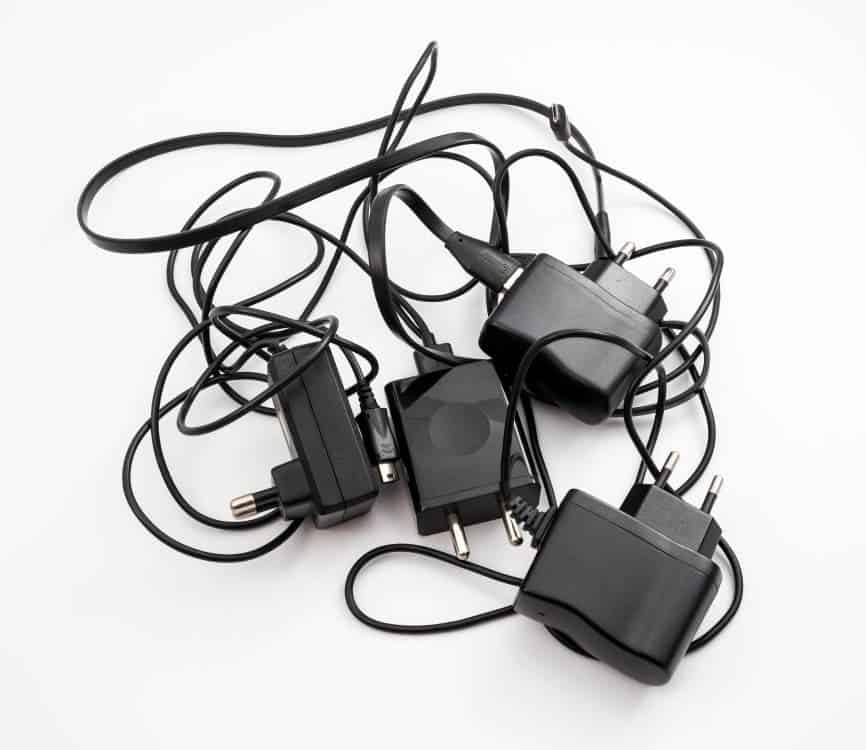We’ve all experienced it at one point, either directly or with a friend: you want to charge your phone, but you don’t have the right charger. Whether you have an iPhone, an Android, or something else — different phone chargers are a drag.
Now, the European Union has voted overwhelmingly in favor of introducing a single universal charger for all mobile phones sold on the continent.
“A common charger should be developed for all mobile phones sold in the EU, to reduce waste, costs and hassle for users,” Members of the European Parliament declared.

Less waste, less inconvenience
More than 51,000 tonnes of electronic waste per year happen because of old chargers being thrown out, stated the E.U.’s assessment. That’s not a trivial figure.
This alone would be reason enough to develop a single, standard charger. It’s even better for consumers: you would no longer need to go and get a new charger every time you upgrade or change your phone.
On top of that, the E.U. believes this would also improve the lives of consumers who would no longer have to go out and buy a new charger every time they upgrade their phone.
So what would the charger look like? Currently, the frontrunner is the micro-USB connector, which is already used in plenty of devices (mostly Android devices, although some models are switching away from it). It’s unclear if this will only apply to smartphones, or if it will also extend to tablets and other mobiles, and it’s also unclear when the directive will enter into force. When it does, countries will have two years to make the switch.
But if the vote is any indication, the switch will happen.
The draft law was approved by 550 votes to 12, with 8 abstentions — a crushing result with votes of all political colors. The economic assessment also found that this won’t affect consumers in any significant negative way. It’s the manufacturers and resellers of chargers that will be affected. In addition, this will combat market fragmentation and increase competition in the sector, which usually means better, more reliable products for consumers in the long run.
Opposition from Apple
The main opposition to this approach is Apple. Apple has made it one of its central goals to develop its own different technology for pretty much anything, including chargers.
Chargers have long been a thorny issue for Apple: they’re expensive, often flimsy, and have been pretty much surpassed by other options on the market — especially the USB-C.

Apple has opposed this proposal, arguing that people have already bought chargers and forcing them to switch would be negative for the environment.
“More than 1 billion Apple devices have shipped using a Lightning connector in addition to an entire ecosystem of accessory and device manufacturers who use Lightning to serve our collective customers. We want to ensure that any new legislation will not result in the shipment of any unnecessary cables or external adaptors with every device, or render obsolete the devices and accessories used by many millions of Europeans and hundreds of millions of Apple customers worldwide. This would result in an unprecedented volume of electronic waste and greatly inconvenience users,” the Apple statement reads.
But while Apple’s point is important to consider, it appears to be rather short-sighted. The waste which would be initially generated by rendering some chargers obsolete would be saved in the long run.
Apple also argued that it is working alongside “six companies” to develop a common standard based on USB-C.
But its point is contradicted by the European Environmental Citizens’ Organisation for Standardisation, which argues that “voluntary agreements (VAs) have proven to be ineffective in fostering market change and a single competitive market”. The organization also suggests other amendments, such as making the charger and the cable separate, so that waste is further limited. It also recommends using USB-C as an alternative to micro-USB.
Nevertheless, it is always complicated when establishing this sort of universal standard. What if some better technology appears along the way? Changing the standard would no doubt be difficult, costly, and wasteful. Also, what if wireless chargers become commonplace, how would this be implemented? The EU’s decision has the potential to backfire, if not drafted carefully.
The impact on innovation, as Apple rightfully points out, also needs careful consideration. But the EU seems determined to make the move nonetheless. We shall see how it plays out.






